15 Tips for Clean Eating on a Budget (Free Meal Plan)
Whether you’re trying to manage your weight, have more energy, or just want to feel better, it’s always a good idea to avoid processed foods and follow a clean eating approach. This article shares practical tips and a 7-day meal plan on how to eat healthy on a budget.
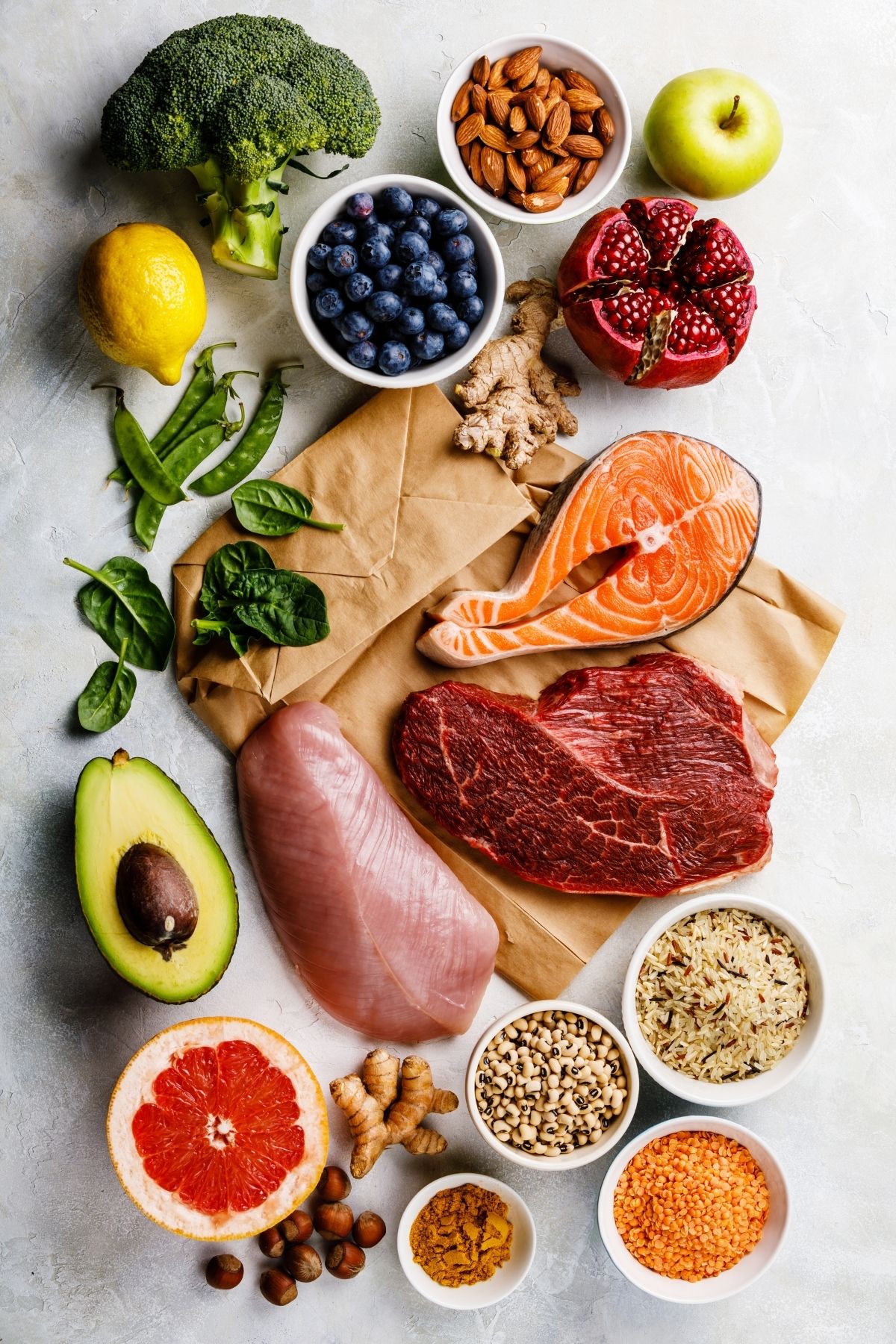
Clean Eating Budget Tips
I was recently challenged by a reader of Clean Eating Kitchen as to whether it’s possible to eat clean on a strict budget? While I believe firmly that it’s possible to follow a clean eating approach and save money, I also know that it can be challenging.
When I was studying nutrition at the university-level, one of my assignments was to create a week-long meal plan for a family on a strict budget. I learned a lot from that project, plus I drew on my personal experience of living on a low budget and not having a lot of money for many, meany years of my life.
So, these tips that I’ve compiled on how to eat clean on a budget come from both my training and my experiences. If you have additional tips, please do share them in the comments of this blog post!
1. Avoid processed and packaged foods, including sodas, crackers, cookies, and candy
- Why:
- It’s tempting to reach for these options, since they’re usually less expensive. Plus, junk food tastes good and can be hard to resist. While including processed foods in your diet sparingly isn’t totally off-limits, you’re better off making the bulk of your diet whole foods.
- Processed foods have been linked to increased risk of health issues such as obesity, heart disease, diabetes, and micronutrient deficiencies. Managing these diseases is expensive and may shorten your life span. Healthy eating is so important for avoiding these diseases later over the long run.
- How:
- Shop the perimeter of the grocery store, or head to the farmer’s markets (many take food stamps). Fill your cart with fresh foods first, then head into the inner aisles of the grocery store for packaged or bulk item essentials, if needed. See my full Clean Eating Grocery List & Pantry Guide for a comprehensive list of foods to buy on a weekly basis.
- See my entire index of clean eating desserts for healthier alternatives to packaged cookies and cakes.
2. Increase water intake
- Why:
- We all know how important hydration is to our overall health. Consuming water, especially instead of beverages like soda or coffee, can reduce your risk of obesity or other diseases. Water is essential for optimal digestion, healthy skin, and brain function.
- How:
- Instead of budgeting for sugary bottled drinks, consider using that money for a reasonably-priced water filter and fruits and vegetables that provide natural hydration. And, make your coffee and tea at home–save those overpriced coffee shop drinks for special occasions.
- See my recipe for Cucumber Ginger Lemon Water.
3. Buy in bulk
- Why:
- If you regularly use certain foods or products, you can save money by purchasing in bulk. Whole grains, beans, spices, dried fruits, nuts and seeds are all available in bulk. Buying in bulk means you have a lower unit price and an overall lower grocery bill. This also equals less trips to the grocery store, saving gas money and reducing stress. Plus, having food on hand prevents impulse take-out orders that really add up.
- How:
- Consider purchasing a membership from a big box store like Costco or Sam’s Club. You can get canned or frozen vegetables in bulk, and even fresh produce and meat are available at many locations. They also offer organic options at low prices. See my shopping list for the best gluten-free products at Walmart!
- If you want to avoid big box stores, research CSA memberships in your area. Get to know your local farmers and explain your budget–you may be surprised by the options available to you. You can even split a membership with neighbors for budget-friendly local eating.
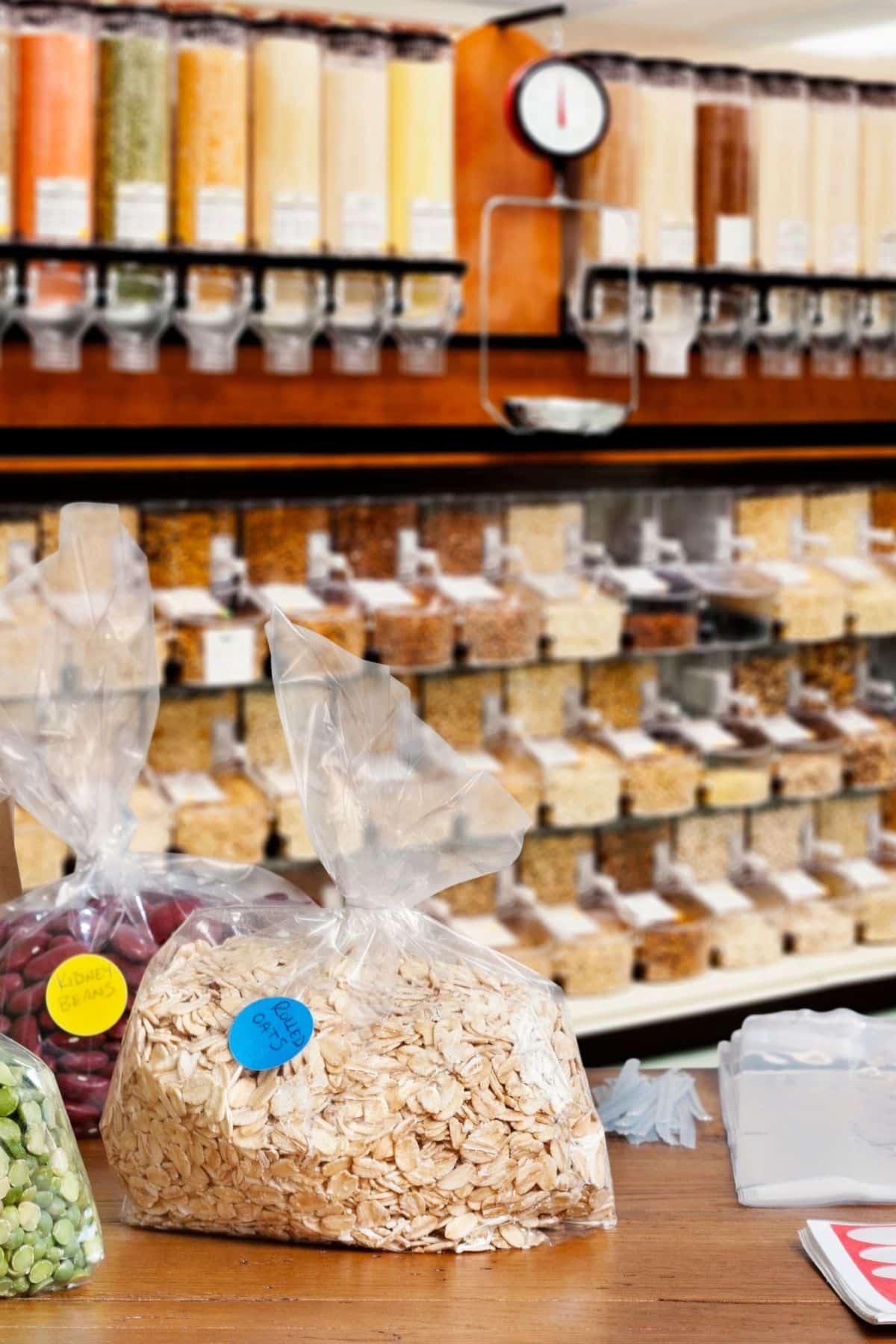
4. Consider frozen vegetables as they are generally more budget-friendly and are just as nutritious as fresh
- Why:
- A bag of frozen organic broccoli could cost half as much as a bag of fresh pre-cut florets. It also doesn’t spoil in two days and can be purchased in bulk. And, as a bonus, frozen vegetables are often MORE nutritious, since they’re harvested at peak freshness in their natural growing seasons.
- How:
- Fill your cart with frozen veggie and fruit options first. If you can’t find something frozen, or need the fresh version for a specific method of preparation (tip: frozen veggies roast up exactly like fresh ones!) then you can head back to the fresh produce section.
- You might like my recipes for how to make Roasted Frozen Broccoli Florets or Air Fryer Frozen Green Beans.
- You can also freeze your own vegetables at home! See my guides for how to freeze cauliflower, how to freeze cabbage, or how to freeze sweet potatoes.
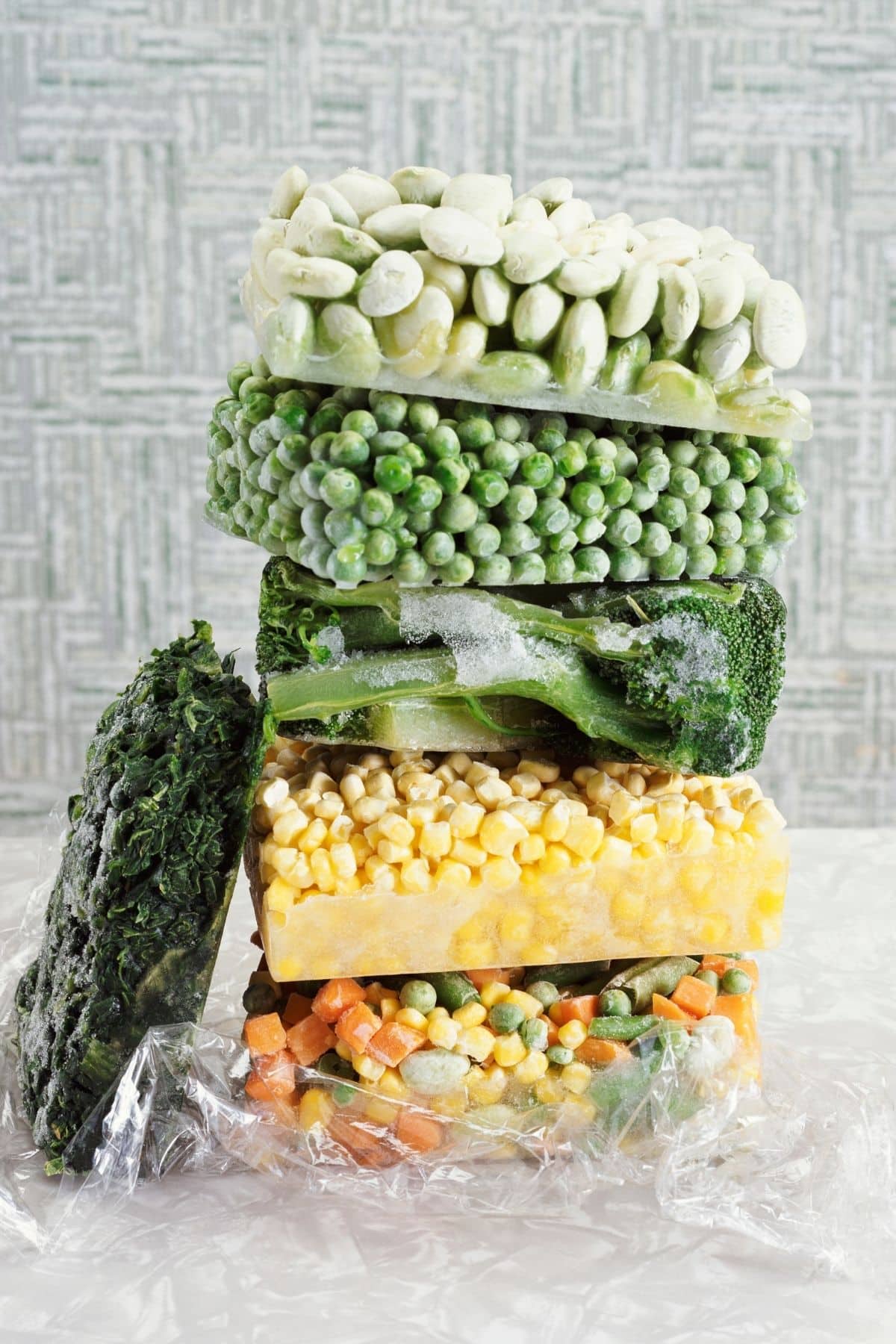
5. Choose plant-based protein sources like lentils, beans, and edamame
- Why:
- There are many reasons you may choose plant-based protein, ranging from moral to health reasons, but a big reason is that sources of plant protein are overwhelmingly cheaper than meat or fish. They also provide fiber, something that is lacking in many Americans’ diets, especially on a smaller food budget.
- How:
- Make the majority of your protein sources at meals plant-based. As a bonus, plant-based protein sources are often great sources of carbohydrates as well, reducing the need to buy separate grains. A high-protein, low-cost, and low-effort plant-based meal might look like slow cooker chili made with lentils and beans instead of meat. See all of my vegan recipes.
6. Make your own sauces and toppings
- Why:
- You’ll pay a premium for pre-made sauces, dressings, and toppings. Manufacturers and stores assume you don’t have the time or desire to make your own, so they mark up simple condiments. And by making your own, you have control over the ingredients.
- How:
- Did you know that a simple and delicious vinaigrette can cost less than a fraction of the store-bought bottle, taste just as good, and take less than 5 minutes to make?
- Instead of buying pre-made condiments, use Pinterest or my clean eating recipe index to search for simple recipes and add them to your recipe box. You’ll eventually become confident enough to experiment on your own, or whip up deceptively easy recipes like Thai peanut sauce (using that peanut butter you bought in bulk)!
- Be sure to use quality oils like olive oil and avocado oil in your homemade sauces and dressings. See my list of the healthiest and safest cooking oils for your kitchen.
- If you do prefer to buy sauces at the store, check out my list of the best gluten-free sauces.
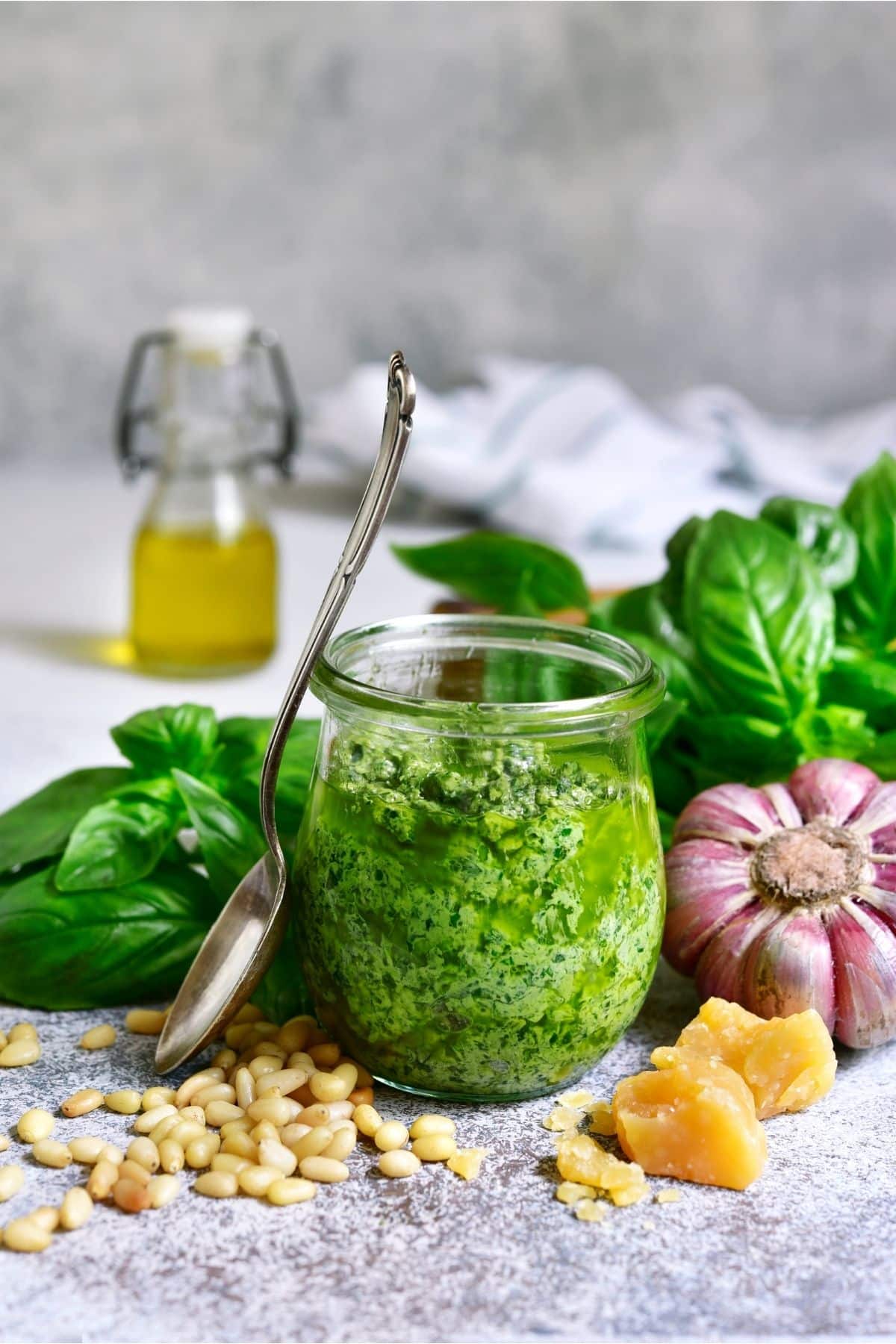
7. Use animal proteins as a condiment or for flavoring
- Why:
- Animal proteins are notoriously pricy. Ethically-raised, nutritious meat is even more expensive – but don’t let that push you into supporting feedlots. In many countries like China where meat is too expensive to have on a daily basis, meat is used sparingly as a side dish or condiment instead of as a main dish.
- How:
- Try limiting your meat portions instead of making them the star of the dish. For example, make a stir-fry filled with veggies and healthy grains, and sprinkle in 2 ounces of chicken or beef. Ignore staged recipe photos with a 6 ounce slab of salmon–you can get the benefits from half that serving size. If you’re worried about protein intake, you can always add in some plant-based protein to supplement.
8. Stock up on the “Clean 15” produce items that don’t need to be purchased organic
- Why:
- You don’t need to buy organic food for everything. Some fruits and veggies are sprayed less, so they’re safe to purchase conventional –these are dubbed the “Clean 15”. Stocking up on these options will prevent you from having to pay the organic mark-up as often.
- How:
- Consult the Environmental Working Group’s Dirty Dozen list when planning your grocery list. In general, anything with a thick skin or that is grown underground (such as sweet potatoes) is safe to buy conventional. Any produce item on the Dirty Dozen list should be purchased organically or avoided.
9. Spend some time each week meal planning or prepping so you always know what you are going to have each day (helps prevent the need to grab fast food)
- Why:
- Meal planning is far from eating the same meal every day. By sitting down and writing out your daily meals – including room for leftovers! – you reduce impulse fast food purchases.
- How:
- Determine how many meals you’ll need and how many servings. You can also include a healthy snack for each day. Browse Pinterest or your favorite recipe blogs for inspiration, and plug your healthy meals into a simple day planner. Then, write your grocery list and stick to it! See more of my meal prep tips for beginners.
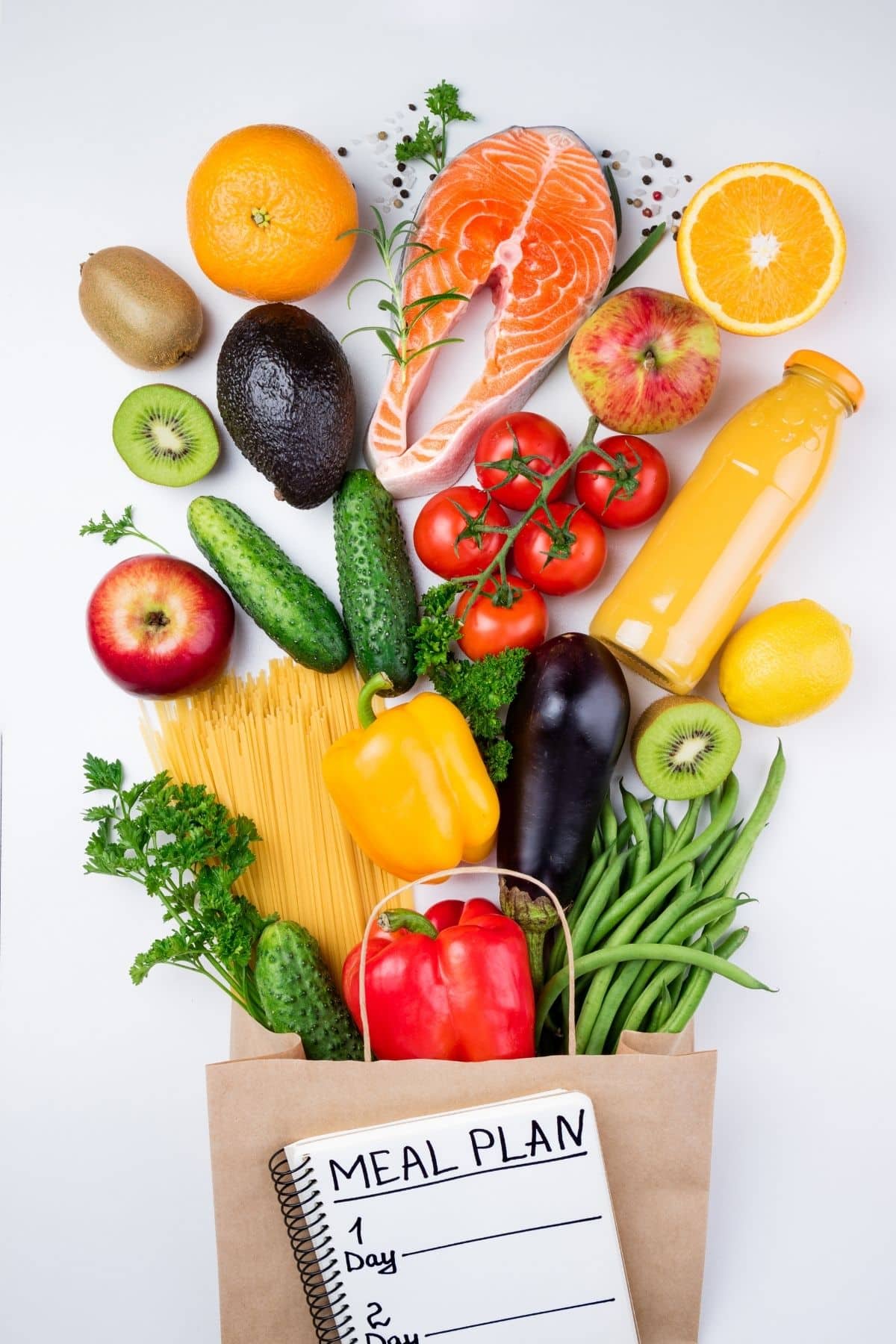
10. Reduce food waste
- Why:
- Follow in our grandmothers’ footsteps and make use of everything you have before buying anything else. Food waste is a huge problem in the US – not to mention that the average family throws out about $1,600 worth of produce annually. By not utilizing everything you buy, you’re just leaving money on the table.
- How:
- When you plan your meals, choose a few base ingredients and create multiple meals around those to ensure you’re using up all your produce and protein. Other tips include using veggie scraps to make a broth or carrot tops to make a pesto. This is another great time to opt for the freezer: either by purchasing frozen veggies so they don’t go bad, or freezing any leftover groceries to use later.
11. Avoid pre-chopped vegetables or prepared meals/ingredients
- Why:
- Just like with condiments, manufacturers and stores mark up pre-chopped vegetables and fruits and make a ton of money on prepared meals. They take advantage of the average American’s busy schedule. But, with careful planning, you can avoid these plastic-covered pre-chopped veggies (that actually spoil quicker than their whole counterparts)! The exception to this is frozen produce, which is usually cheaper and often already chopped.
- How:
- Keep your recipes simple. If you have limited time to meal prep or cook, is that recipe calling for fresh chopped butternut squash really worth it? Instead, lean on easily-prepared staples like potatoes, legumes, summer squash, and leafy greens.
12. Opt for less expensive animal protein
- Why:
- If you still want some animal protein in your diet but don’t want to spend a ton, opt for less expensive options. The money you save can go towards buying organic or wild-caught versions.
- How:
- Eggs, canned fish, and broths are amazing sources of protein and nutrients that cost significantly less than meat or fresh-caught versions. Eggs last for weeks in the refrigerator, canned fish is easy and inexpensive, and you can make your own broth from the chicken you roasted the other day (another way to avoid food waste)!

13. Shop the sales and don’t buy out of season
- Why:
- Almost every grocery store has sales on a daily basis. There’s no reason not to take advantage of the sales – you can save serious money on items you were already planning to buy, or even use the opportunity to try new things.
- Along a similar line, try not to buy produce out of season. For example, buying blueberries in December will set you back way more than if it were June.
- How:
- Grab a flyer or download their app to search for sales and try to align your grocery trip with the days your favorites are on sale. And don’t forget to use coupons if they’re available – it makes a difference! If another brand of milk is on sale while your favorite isn’t, consider trying the sale brand.
- When it comes to out of season produce, either avoid it or choose frozen, and plan your meals according to what’s in season. Here is a great seasonal produce guide.
14. Say “no” to wellness culture products
- Why:
- Supplements and additives can be really fun and spice up a meal, but they’re just not necessary for the majority of people. You don’t need products like cacao nibs or bee pollen to be healthy.
- How:
- Unless you have a specific health condition and have been instructed by a doctor, you don’t need to spend your money on supplements or special products like adaptogens or protein powder.
- The same goes for specialty items like gluten-free products. If you want to include these items occasionally, be sure you are budgeting accordingly, and buy them on sale or in bulk.
15. Grow your own food
- Why:
- Growing your own food in a garden is a great way to save money. While you’ll have an initial expenditure to get the garden going, many people are able to cultivate seasonal gardens that provide for years and years.
- How:
- Start with a container garden or consider growing simple things like broccoli sprouts or microgreens. Once you get the hang of growing your own food, it gets easier and you’ll end up saving money.

7-Day Clean Eating Weekly Meal Plan on a Budget
Along with my tips for Clean Eating on a Budget, I’ve also created this budget-friendly meal plan that only used real food ingredients. You’ll see that there are no packaged items included in this meal plan, but it’s also budget-friendly using staples like oats, potatoes, beans, frozen vegetables, and plant proteins.
Feel free to swap out any meals with ingredients you don’t like with similar recipes. You can always refer to my Clean Eating Recipe Index that has hundreds of easy recipes. And, don’t miss my epic Clean Eating Food List that includes a comprehensive guide to what is included in a real food diet.
A few of my other favorite healthy budget-friendly sites include Budget Bytes and A Mindful Mom.
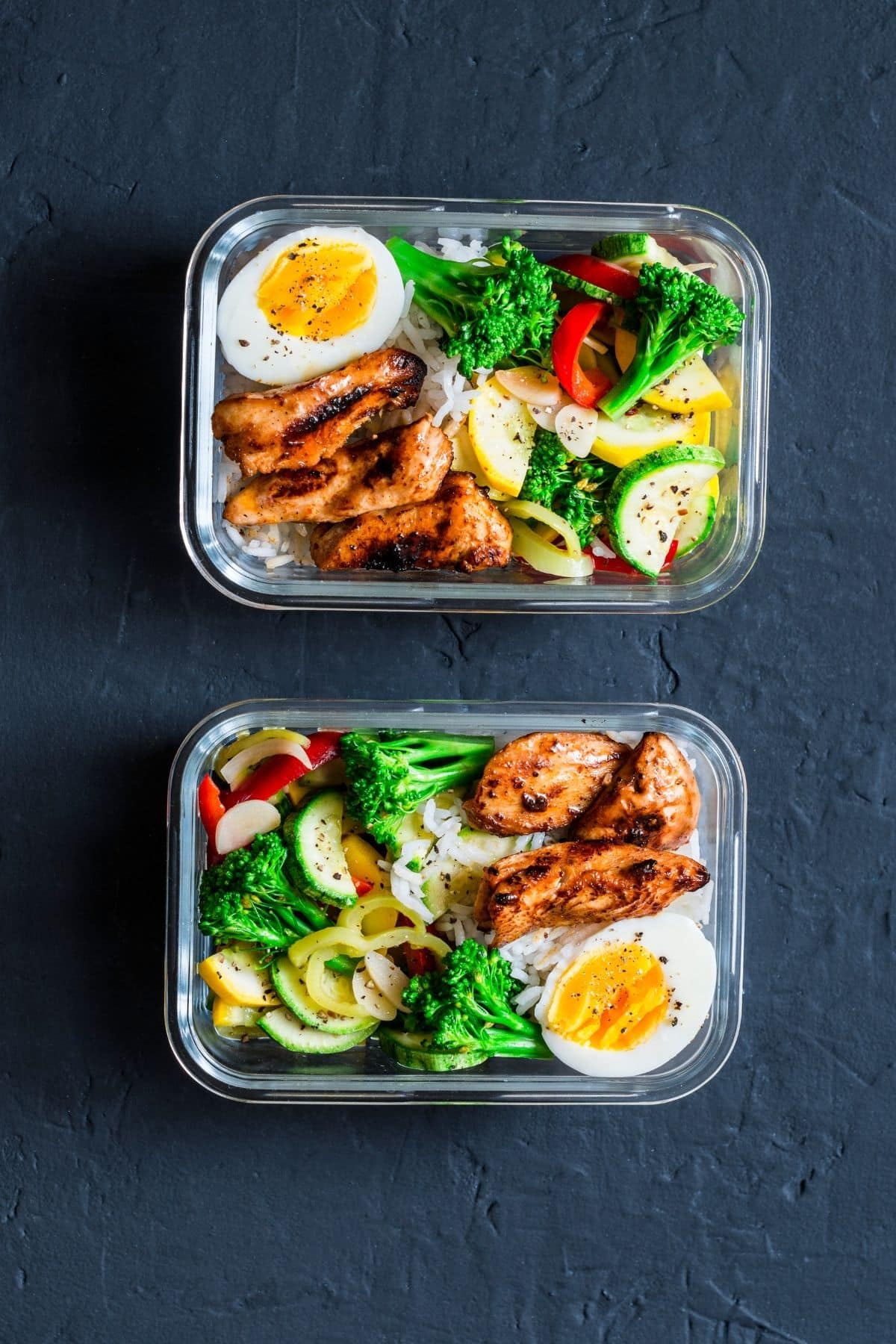
Monday
- Sweet Potato Apple Breakfast Hash
- Chickpea Tuna Salad served in tortilla
- Panda Express Mushroom Chicken (copycat recipe)
Tuesday
Wednesday
- Peanut butter chia pudding
- Lentil Salad
- Loaded baked sweet potatoes
Thursday
Friday
Saturday
- Strawberry Banana Peanut Butter Smoothie
- Tofu scramble
- Spaghetti
Sunday
- Oat Flour Pancakes
- Leftovers from the week
- Sweet Potato Chicken Coconut Curry
Snacks & Treats
- Carrot sticks & peanut butter or almond butter
- Cheese (if you aren’t on a dairy-free diet)
- Seasonal fresh fruit or dried fruit
- Nuts or seeds
- Hard-boiled eggs
Or, see my entire list of the best clean eating snacks.
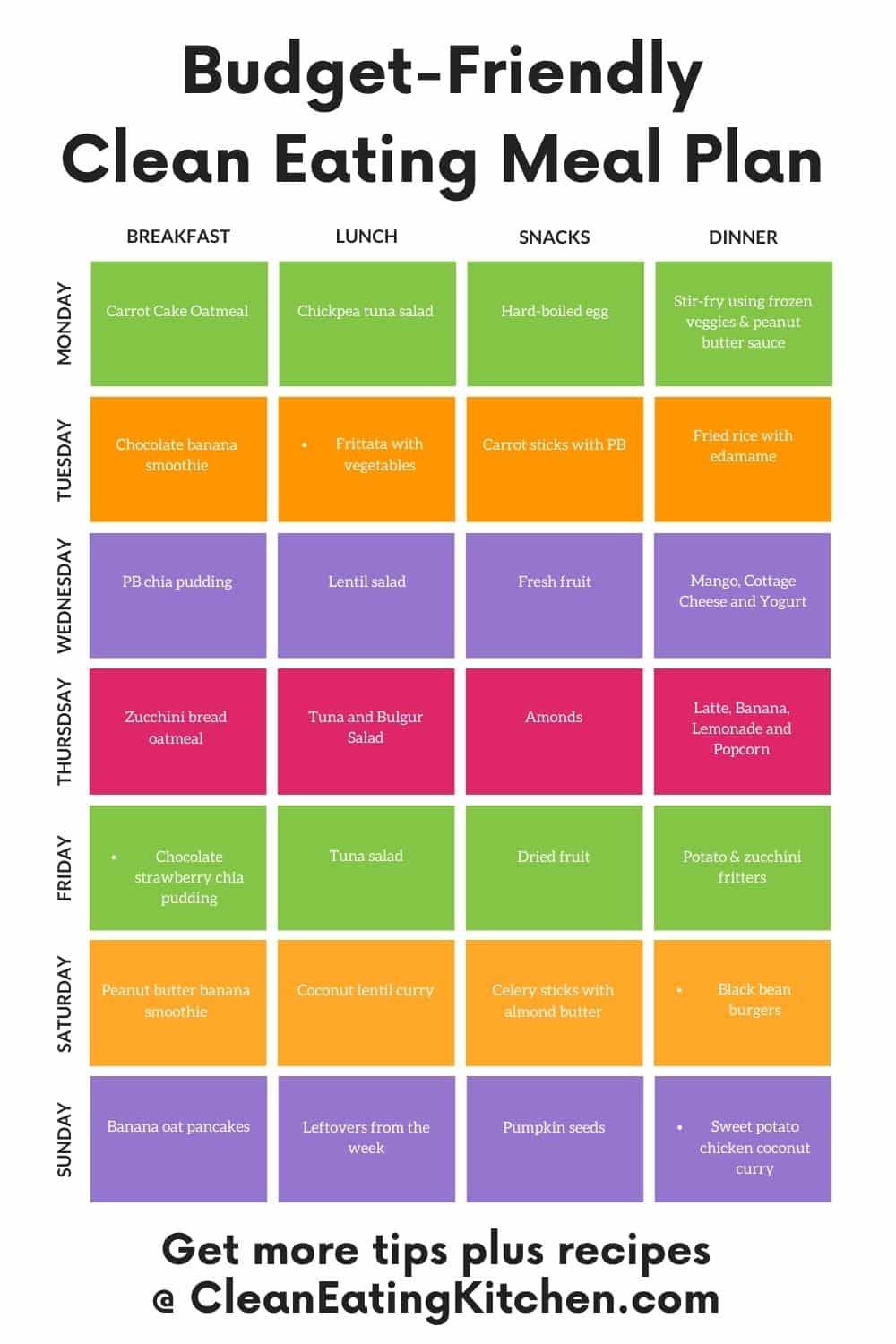
Conclusions
Even when you’re on a strict budget, you can still eat clean and eat a healthy diet full of real, unprocessed foods. This article provides a comprehensive list of tips and a healthy meal plan to eat well and save money. By planning ahead, you can avoid the temptation and need to buy unhealthy foods, plus minimize your overall food bill.
Don’t Miss These Clean Eating Resources
Don’t forget to join my newsletter list to get exclusive clean eating recipes and tips. The newsletter is 100% free with no spam; unsubscribe anytime.
About the Author: Carrie Forrest has a master’s degree in public health with a specialty in nutrition. She is a top wellness and food blogger with over 5 million annual visitors to her site. Carrie has an incredible story of recovery from chronic illness and is passionate about helping other women transform their health. Send Carrie a message through her contact form.
Note: this post is for informational purposes only and is not intended as medical advice. Please consult your healthcare provider for recommendations related to your individual situation.


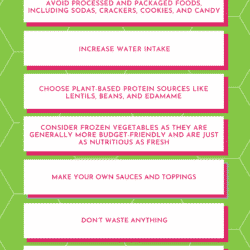
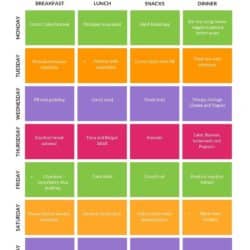
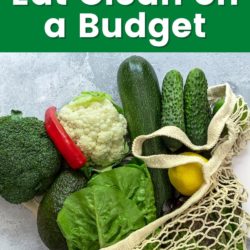
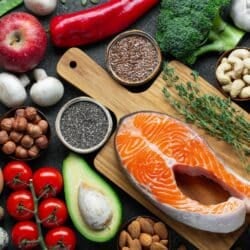
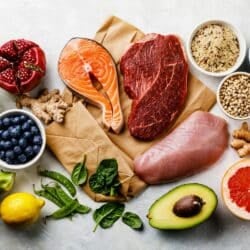







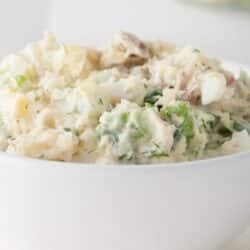










What are the items in “Clean 15” list?
here you go! https://www.ewg.org/foodnews/clean-fifteen.php